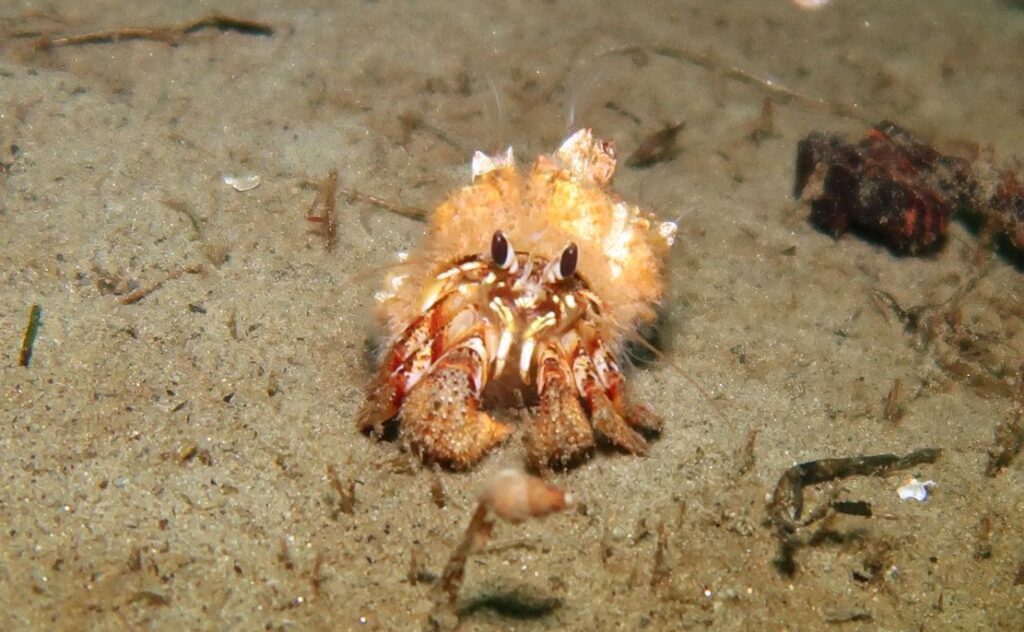Hermit Crabs (Superfamily Paguroidea)

Hermit crabs are found across the globe, typically in shallow sandy areas. Despite their name, hermit crabs are actually not actually true crabs. Instead, they are part of a closely related group called Anomura. The best way to distinguish a true crab from an anomuran is the number of walking legs. True crabs (brachyurans) have five pairs of well developed walking legs. Hermit crabs have five pairs of legs, but only use their second and third pairs to walk; the fourth and fifth pairs are specially adapted to grip their shell.

Unlike true crabs, hermit crabs lack a hardened exoskeleton on their carapace. Instead, they utilize the discarded shells of other organisms for protection and shelter. They have many adaptations that allow for life in a shell. Their abdomen is asymmetric to allow them to fit snugly in the shell, and one of their chelae (claws) is larger and specially shaped to block the shell’s entrance.
There are over thirty species of hermit crab in British Columbia, which can be found in habitats ranging from the intertidal to the deep sea. The most recognizable of these are the Pacific red hermit crab (Elassochirus gilli) (above right) and blackeyed hermit crab (Pagurus armatus) (above left). Pacific red hermit crabs can be easily identified by their bright orange colouring and lack of hair. They tend to prefer discarded triton snail shells. Blackeyed hermit crabs are most identifiable by their over-sized black eyes and the orange bands on their legs. They generally prefer to inhabit discarded moon snail shells.
To learn more check out our Seaquaria video about hermit crabs. Hermit crabs are a common resident in our summer touch tanks! Some other great resources are Biodiversity of the Central Coast & the Royal BC Museum.


